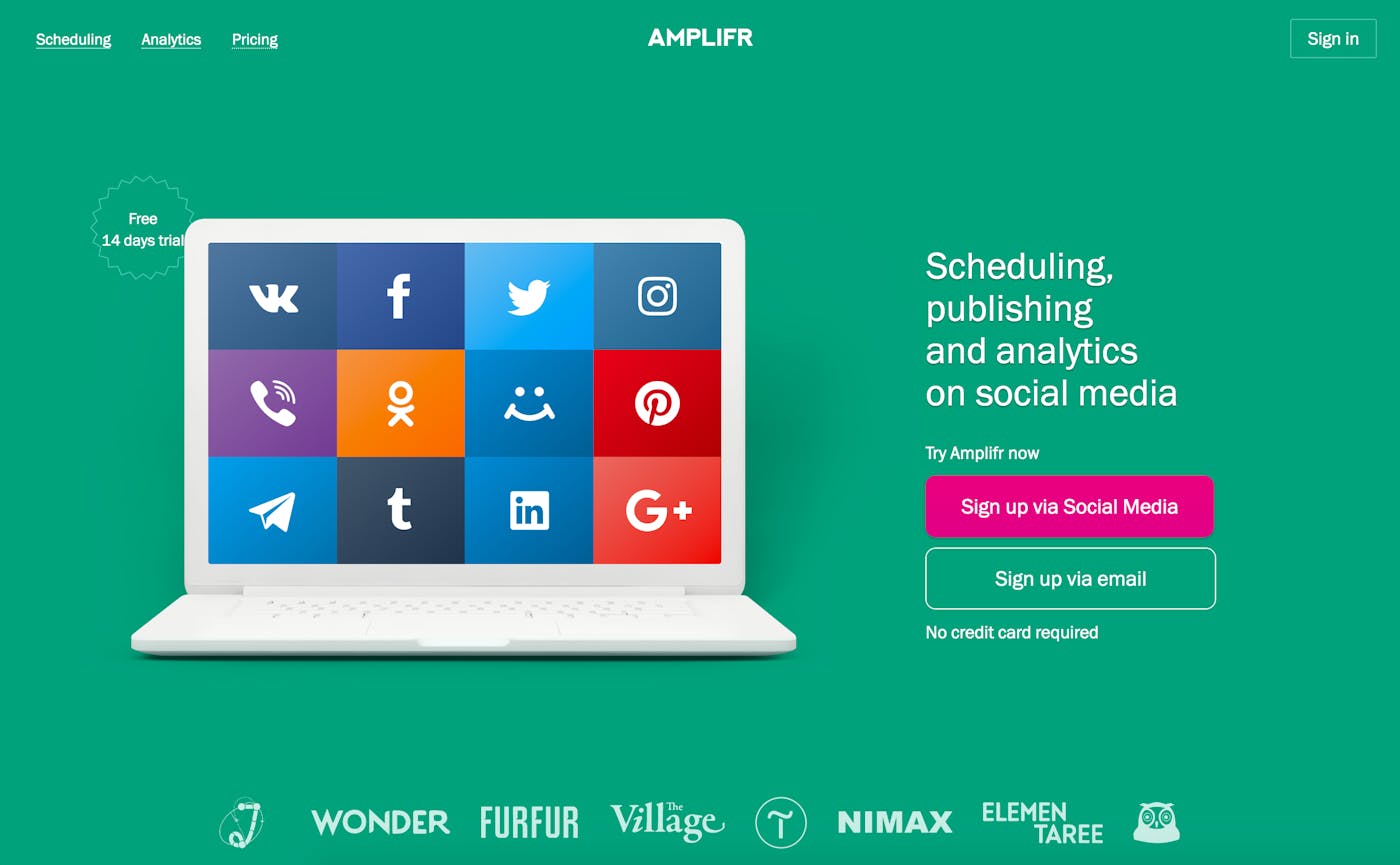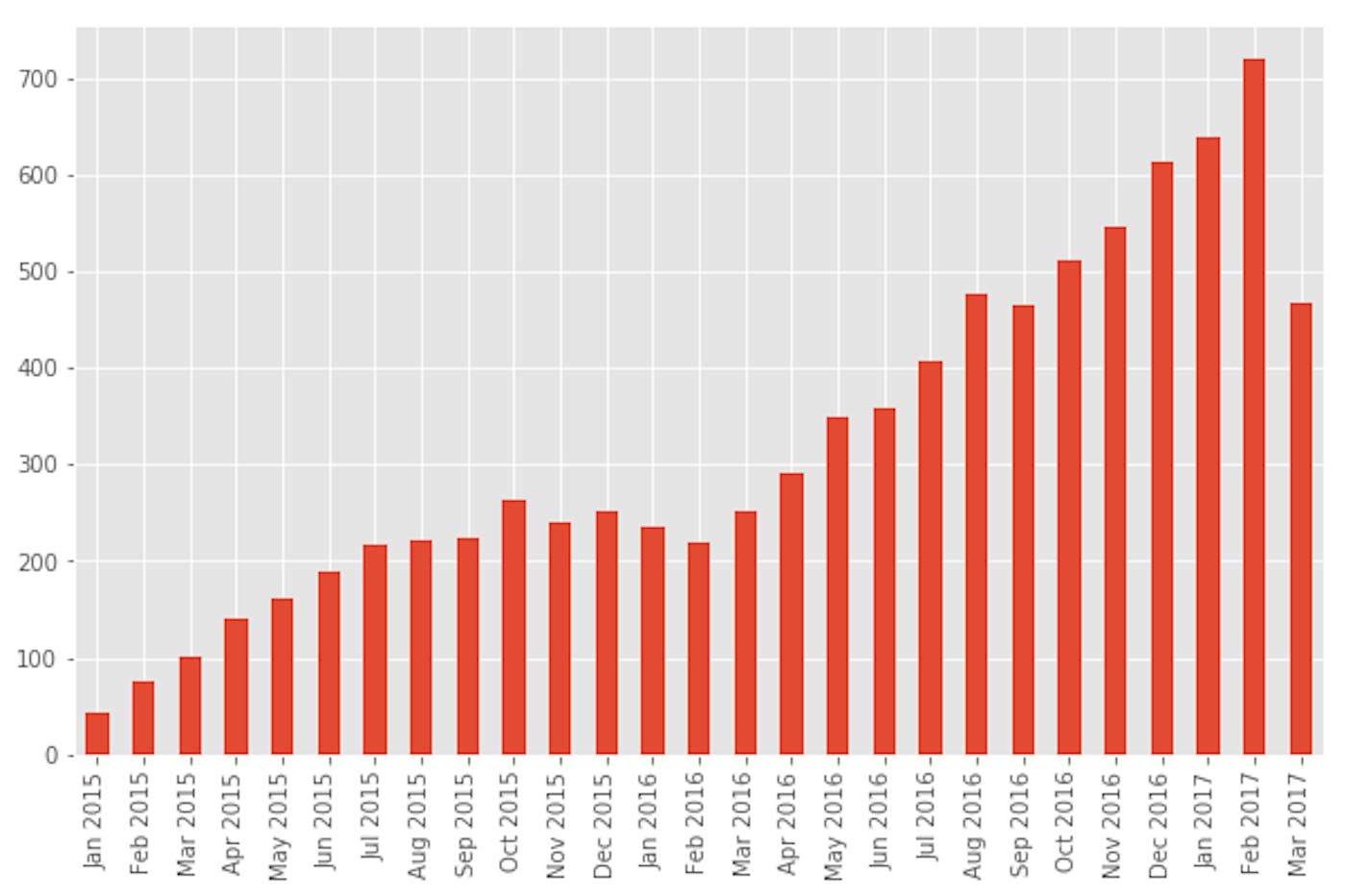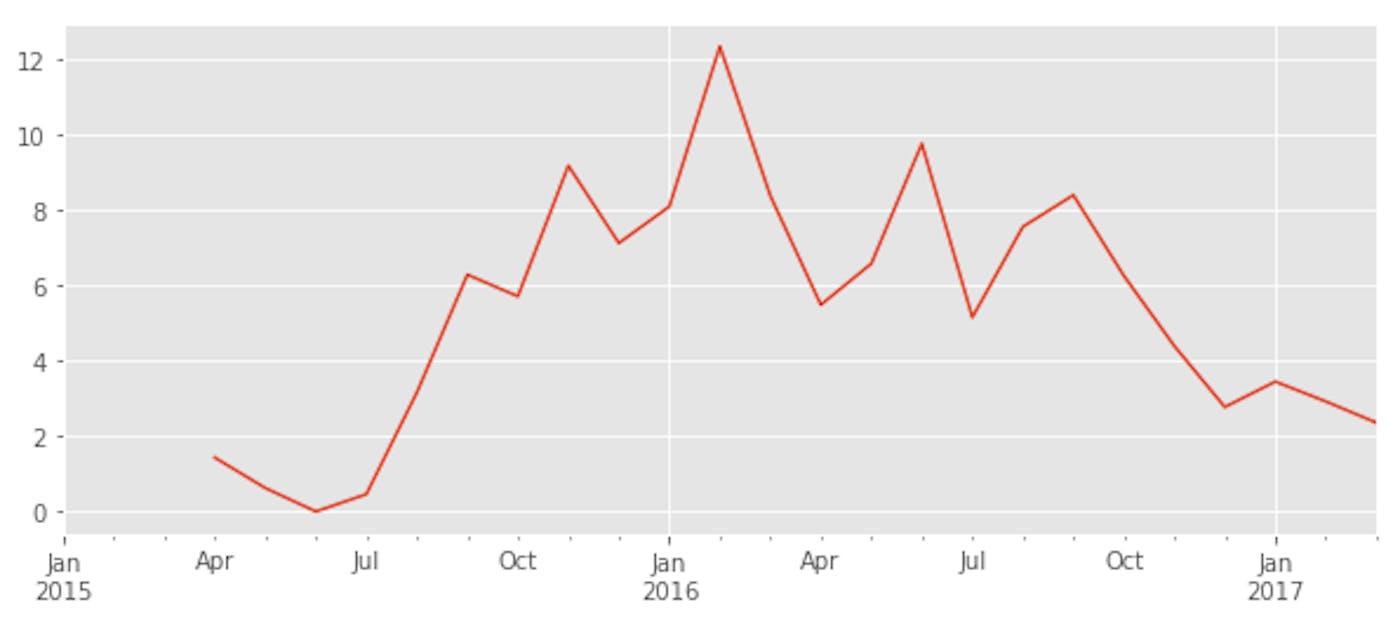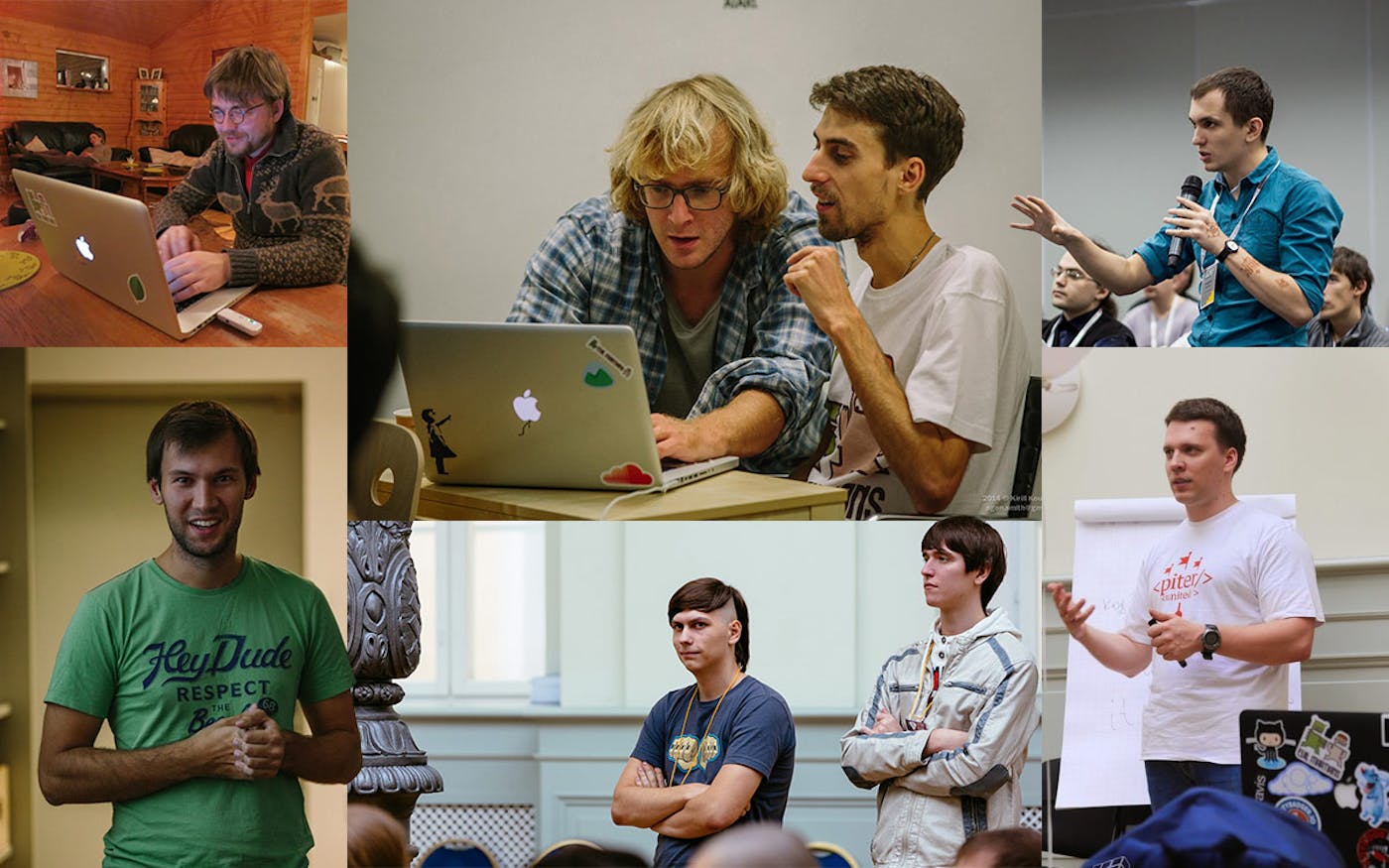Turning My Consulting Revenue into a $16,000/mo
Product
Hello! What's your background, and what are you working on?
Hey, I'm Nate. I started coding when I was about 14 with a small 3D-modeling project: an education suite to teach kids geometry and 3D thinking. I became a web developer a bit later, and started diving deeper into products by about 20.
Now I'm working on Amplifr, and I help out with web dev shop Evil Martians.
Amplifr is a publishing and analytics platform for startups, advertising/digital agencies, small companies, and media projects. It helps companies schedule and measure ROI for their social media efforts (per-post conversions and traffic analytics).
Amplifr is run by 5 people working remotely and vagabonding from 4 cities and 3 different timezones with clients from more than 41 countries. We're generating $16.5k monthly recurring revenue (MRR) from 688 clients with around $24 average revenue per user (ARPU).
It's not a side project for just one person — it's more of a side project for a company trying out a new role and niche: launching our own products instead of helping other companies launch theirs.

What motivated you to get started with Amplifr?
I joined Evil Martians six years ago on my 23rd birthday, February 28th. We do web and mobile product development for startups and grown up companies like OnboardIQ (YC15), eBay, GETT, Groupon Russia, etc.
Every development shop wants to build its own products. Otherwise, your revenue stream is capped by the amount of clients you work with and your hourly rate. Bummer.
So we agreed that I would be responsible for the product division along with business development in general. We tried 4 different projects from 2012 to 2016. Amplifr was my third project and it took off.
By the end of 2014 we had sort of a mixup of Shopify plus Mailchimp plus a CRM tool that we couldn't build a sales process for. We called it Amplifr at the time, but now we call it Amplifr-Legacy.
I literally commented out (hid) 95% of the sidebar menu items, leaving only the "social media" item. Then I assembled a simple landing page for it, and after a week it took off.
When we saw that it worked, we just cut everything else out and refocused ourselves. We revamped the UI, improved the trial funnel, and started testing our marketing for the social media automation tool.
What went into getting this product ready for launch?
There's a number of things about our launch that are very important to outline from the very beginning:
-
We're not VC funded, but rather a lifestyle business. Maybe we'll sell it in a couple years, but I don't think we want that. We can't go through an acquisition (Martians are not for sale that way), and there are so many things we as a team — and I as a CEO — want to learn and do.
-
Our Evil Martians + Amplifr setup means we don't have a regular startup runway, but we have a made-up runway: nearly unlimited time and money from our consulting business. This difference is something we try to remain aware of, so we don't fall prey to the sunk cost fallacy.
-
Our core team has had stable salaries during our work on Amplifr. We adapted our lifestyles a bit, but it hasn't required full risk-tolerance from us. If we failed, it'd be okay. We could always try something else, or work on a client project with Evil Martians.
In terms of working on Martians and Amplifr at the same time, it was pretty simple: I just took a half-year vacation from Martians business development. I guess you can say that I'm an R&D / Entrepreneur in residence. Martians also helped with the development.
Since we were pivoting from a different (failing) product, we were in production from day one. However, we did remove the legacy parts and improve the trial funnel for the new product. And we added some parts as well. I'd say the initial development phase took about half a year.
What's your tech stack?
In our first version, it was just Rails + Postgres on a single bare metal server. The front end was, I think, backbone.js, and a Russian payment processing platform (we're based in Moscow, Russia).
Later on, we rewrote the front end with React (sorry, Pieter). The back end is still Rails and Postgres, but now it has a Cassandra cluster for data storage, 3 machines with a Kubernetes cluster on top of it with God knows how many containers running.
What strategies have you used to attracted users and grow Amplifr?
I think the initial users were from Facebook ads I placed and paid for with my credit card. It was an experiment, and it was pretty cheap in Russia at the time.
We launched on Product Hunt in April 2016. (We're getting ready for the 2.0 launch in March or April! If you want to see how it goes, follow us on Twitter.) We had about 8k people visit our website in two days, about 600 signups, and a few paying customers. There were a lot of people talking with us: VCs, other companies wanting APIs, etc.
Definitely launch on Product Hunt, but do it right. Check out what we wrote about our experience.
We're currently working on a different set of channels for user acquisition in different markets. We do content marketing (blog, newsletter, guest posting), paid advertising on social and search, experimental projects, giveaways, submissions, and more.
Two different language markets perform very differently, so we've had three markets to test: Russian, Europe (less saturated English), and the US. Europe is much cheaper in terms of marketing than the US, which in our niche is pretty crowded. Consider this:
Russian/European version:
- Trial-to-paying conversion is about 3% over all the acquisition channels.
- Adwords search ads and network ads work great — we get a sign up for $1.
- Facebook ads became too expensive in late 2015, but I think we can make them work too.
- Our blog has about 28k sessions monthly. Each article converts to a signup at about 2%.
- The newsletter has about 20k people with a 3% click rate. Conversions are okay-ish.
- Quora ads cost us $3-4 for a signup.
US version:
- Trial-to-paying is about 5% with much less work done to improve it. A ton of things we can still do to bump this.
- Adwords: $5 per signup.
- Facebook ads: too expensive.
- Blog: well, we had about 135 people there last week :D
- Newsletter: about 1,500 people, aka non-existent.
- Quora ads: $8 per signup.
- Guest posting: much more potential than in Russia.
Overall, 90% of our revenue is still from Russia and Eastern European countries. But we are seeing US clients coming from paid advertising, and that's great.

The number of customers took off in 2016.

Customer growth coincides with lower churn rates.
I think that the US market is super-saturated with all sorts of SaaS. To acquire users, to get opportunities to guest post, and to do pretty much anything else, you have to have a story. The US market and the Bay Area are hungry for stories and very much fed up with yet another Twitter-Bootstrap-SaaS.
One thing I'm proud of is that our content marketing team is profitable, even if you just count the signups that we get from the articles in the first month after they are published, and not including SEO traffic, etc.
Paid ads are fast, so we're testing them first in the US market. Then we're going to do guest posting, and then we're going to build more traction for our blog and the newsletter.
I'm absolutely convinced these ads will work. Yes, we're in a super crowded market. But we do have an opinion and a voice. Marketing should be quantifiable. Everything you don't measure doesn't exist. Non-bullshit social media marketing (SMM) is possible, and Amplifr is here to show you how.
A piece of advice if we strip everything from above: build and ship fast, and then use quick paid acquisition channels to test your product conversions, and decide what to do from there. This will burn $500, but it will give you data.
Wasting even one week doing the wrong thing is much more expensive than $500.
How does your business model work? What's the story behind your revenue?
We're a SaaS with subscription ARPU of $24. I don't think that's very good, and we're trying to increase it.
We charge per social media account connected, and the price is higher for bigger agencies / medias. We're adding per-seat pricing for larger companies (5+ seats: $5 per additional manager) and import channels ($5 per RSS / import feed after second).
Here's some simple advice for anyone from the get-go: DOUBLE. THE. PRICE.
We have an agency advanced pack as well — a $500/month dashboard that's tailored for advertising agencies and their clients, billed annually. I'll tell you if that sticks in a couple months.
We have to use at least two payment processing gateways (Stripe and Cloudpayments.ru) because we're running on two markets. Russian processing sometimes fails to charge US-issued credit cards. (Also, charging people in ₽ seems a bit weird. Consider seeing 1200 ₽ AMPLIFR.COM on your bank statement).
Our revenue in February was $16,500, bringing our last 30 days' revenue to about $17,800. I can't say it grew very fast. There's no hockey stick:
| Month | Revenue |
| Jan | 2876 |
| Feb | 3574 |
| Mar | 3730 |
| Apr | 4242 |
| May | 4440 |
| Jun | 5158 |
| Jul | 5649 |
| Aug | 6251 |
| Sep | 6657 |
| Oct | 7042 |
| Nov | 6890 |
| Dec | 7383 |
| Jan | 7372 |
| Feb | 7167 |
| Mar | 7747 |
| Apr | 8344 |
| May | 9590 |
| Jun | 9566 |
| Jul | 10130 |
| Aug | 10853 |
| Sep | 10847 |
| Oct | 11559 |
| Nov | 12048 |
| Dec | 13554 |
| Jan | 13967 |
| Feb | 16501 |
| (Mar) | 18698 |
What worked and what didn't work for us in terms of MRR:
- New features almost never work without prior research and pre-sales. Analyze, draft (sketch the feature), segment users or leads who might benefit from it, and ask for a pre-payment. If they pay, build the feature. If they don't, don't build the feature. It won't help.
- Separate newsletters for just the blog readers vs the paying users works great.
What are your goals for the future?
Here are our 3-month goals:
- Hit $24,000 MRR.
- For our US expansion, we'd like to hit 100 clients from the US, launch v2.0 everywhere we can, and ramp up to 300 signups per week.
- For our Russian expansion, we'd like to hire a sales guy to sell to agencies and enterprises, and hire another customer champion ;-)
And here are our 6-month goals:
- Figure out a product that generates $500 ARPU instead of $25. It will probably be the ad agency mod we're working on, but we're only just testing it now.
- Deploy our ML-based prediction engine and sell it separately via a subscription model.
What are the biggest challenges you've faced?
For a very long period of time, Amplifr has been growing rather slowly. That feeling of other people launching VC-backed companies, some other people boasting about their success on Facebook, and us being rather slow, drove me insane.
You know, that "oh we're doing great" startup behaviour that masks the simple fact that most startups fail miserably but fail to talk about it, and fail to talk about its implications for the founders, their health, emotional condition, plans, etc.
The decision to build a transparent company was a hard one to commit to.
Another problem that I think a lot of founders have is being too slow to hire and delegate, and too slow to fire when things are not working correctly.
These challenges forced me to commit to radical transparency inside our company and publicly. We commit our salaries to be subject to monthly review by our whole team, our objectives and key results (OKRs), etc.

The Evil Martians team.
What were your biggest advantages? Was anything particularly helpful?
The biggest advantage we have is our company structure, the way we're formed, and the way we work. We're an Evil Martians family. We're the Entrepreneurship School inside a company. We're the R&D. There are good things and bad things about it, but since we're not into the VC dream, we feel great about it.
We had to take some countermeasures to not fall for the sunk cost fallacy, to not overspend development resources just because we have them "unlimited".
I think most development companies fail as product companies because they think, "Hey, I have 3 available devs I couldn't sell this month. Let's build a product!" And they throw them at some product idea which they don't know how to market or sell. Then they spend a few months with it, and it fails.
No one is willing to pay for what that company calls a "product", but what is in reality the hobby of 3 available developers with no good product management or marketing whatsoever.
What's your advice for indie hackers who are just starting out?
Launch something you charge money for (even if that's just a Typeform connected to Stripe) immediately after you have an idea, and start marketing it.
Test marketing channels by spending $500 and tracking cost per click (CPC), conversion percentage, cost of customer acquisition (CAC), and revenue. You'll get product and marketing improvement ideas from every test you do. $500 is very cheap. Much cheaper than spending another week developing a product no one will ever use. :D
I've made the mistake of not taking this advice myself, and I spent over $150,000.
One good thought excercise is to imagine you've spent a year building a good product and you'll start marketing after the year is over. How much does one year of development cost if you only do "free" marketing during that year, like blogging or guest posting?
Now think what would happen if you spent $3,000 on ads in the second month — when your product was a rough MVP. Yes, you would lose money on ads and you would have just a few paying clients. You would also learn what exactly sucked in your product, conversion-wise, and you could focus on those areas.
What I'm trying to articulate is that paying for development, and not for ads, is far more wasteful than paying for ads early on and saving on development. I'm not saying build low quality products and market them. I'm saying focus on revenue and marketing early on, and use product quality as a marketing tool to gain revenue.
What things have inspired you?
I recommend three books:
- Definitely go read Tools of Titans by Tim Ferris. It's a series of short interviews with Tim's podcast guests who are creative people or business owners, etc. It allows you to grasp motivation and advice from a chapter, and immediately apply it to your situation. I've changed my morning routines from this book's advice, and it affected my performance the same week. <3
- Read High Output Management by Andy Groove of Intel, and The Hard Thing about Hard Things by Ben Horowitz. The first one teaches you about running a company of any size in a really simple way, and the second one is very tightly connected to the former — it's the most novel book about business and startups I've seen. I absolutely love it, and it keeps you there, in the loop, fighting for your company when you want to give up.
- When Breath Becomes Air, by Paul Kalanithi: just go read it. It's a short, beautiful, meaningful, touching novel. It changed the way I think about everything. My family, my company, and myself.
Where can we go to learn more?
- twitter.com/amplifr
- facebook.com/amplifr
- blog.amplifr.com/en/ — We're going to share more articles like this on our blog newsletter, so join in.
- amplifr.com — If your company has social media profiles, please do try Amplifr. It's the only platform that tells you exactly how many conversions you have on a per-post basis for the content you schedule to go out on your social media accounts.
I'm personally at twitter.com/xnutsive. Feel free to ask anything you want about Amplifr — I'll be happy to reply and elaborate on Twitter, or in another article.

Привет! Where r u guys, based in Russia?
I'm a blogger and using buffer to promote my blogs over different social media accounts. I think this is the best social media scheduling tool. This tool allow me to schedule my blog post sharing over various social networking sites.
It boosts my blog visitors incredibly.
Source: http://www.toolsinsight.com/tool/buffer/y9rIvINa
Nate, great interview! What does your conversion funnel look like? What is your strategy for using paid Facebook ads across different markets like the US and Europe?
Thanks for the Q, sorry for getting back to it so late.
Conversion at the moment:
~ 8% from website to trial user
~3% from trial user to a paying user
This has been pretty consistent across channels (blog conv is higher, display ads is lower, nothing unusual).
On Facebook, we're revamping our ads altogether. The new idea is to do a ~ 2m video ad explaining our product and then retarget people with another ads based on % of watched video and the context they already know about us.
I'll let you know (post and link here) when we launch that.